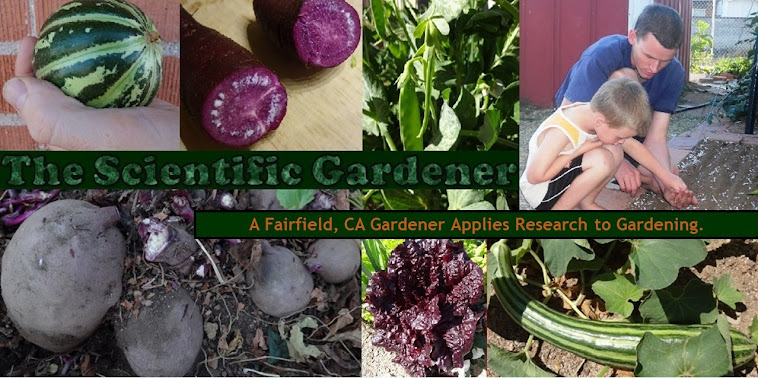Living in a southern climate means
an uncertain winter. Sometimes the winter is very cool while other times we
experience 80-90 degree Fahrenheit days for a week or two at a time. Often,
when there is a warm period during the winter the lettuce goes bitter. Even
some more bitter-resistant kinds of lettuce that I have grown have gone bitter
– until this year.
 |
| My Jerico Lettuce sprouted up quickly (Source: SESE) |
Though Jerico Lettuce is not the
most beautiful romaine lettuce it is the most bitter-free variety I have ever
experienced. While some lettuce will go bitter in the middle of the winter,
Jerico continued to produce healthy slightly-sweet leaves until they finally
bolted in May.
 |
| Some uniformly green leaves of Jerico Lettuce |
Saving lettuce is a pretty simple
task. All a gardener needs to do is leave the lettuce alone and let the
pollinators do their job. I chose to select my seed by saving only the largest
lettuce heads that bolted last. Late bolting is essential to growing in a warm
climate and if the early-bolting plants are not culled then the gardener will
not improve the variety.
 |
| Lettuce beginning to bolt |
 |
| Lettuce Flowers are so pretty |
I am always experimenting with new
techniques in harvesting and saving seed. This year I tried both cutting
individual lettuce heads by hand (a very laborious process) as well as
experimented with waiting until the majority of the seed had dried before
cutting off each stalk. Cutting off individual heads by hand is probably only
worthwhile if you have strong winds or the seed heads are going to be disturbed
by something going through the garden. Otherwise it is much easier to wait
until the majority of the seeds heads have started producing seeds and lop the
whole stalk off at one time.
 |
| One method of harvesting lettuce is to harvest one head at a time. |
 |
| Lettuce Heads beginning to dry. |
 |
| I also harvest lettuce by cutting each stalk when most have gone to seed. |
 |
| The rest dry out and go to seed shortly thereafter |
Once I have gathered the seed
heads and let them dry I rub them with my fingers to separate the individual
seeds from the seed heads and white fuzz. Then I winnow them using either the
wind (if there is a consistent wind outside) or a fan (if the wind is
unpredictable that day).
 |
| Lettuce heads after drying and being rubbed to separate the seeds from the heads. |
 |
| Winnowing the lettuce seed |
That is about all that is required
to save lettuce seed. I would highly recommend Jerico lettuce to anyone who
wants to extend their lettuce crop beyond the usual season. It is not a
beautiful variety, by any means, but it produces a reliable harvest long after
other lettuce varieties have turned bitter.
 |
| Lettuce seed is easy and fun to harvest. (= |











